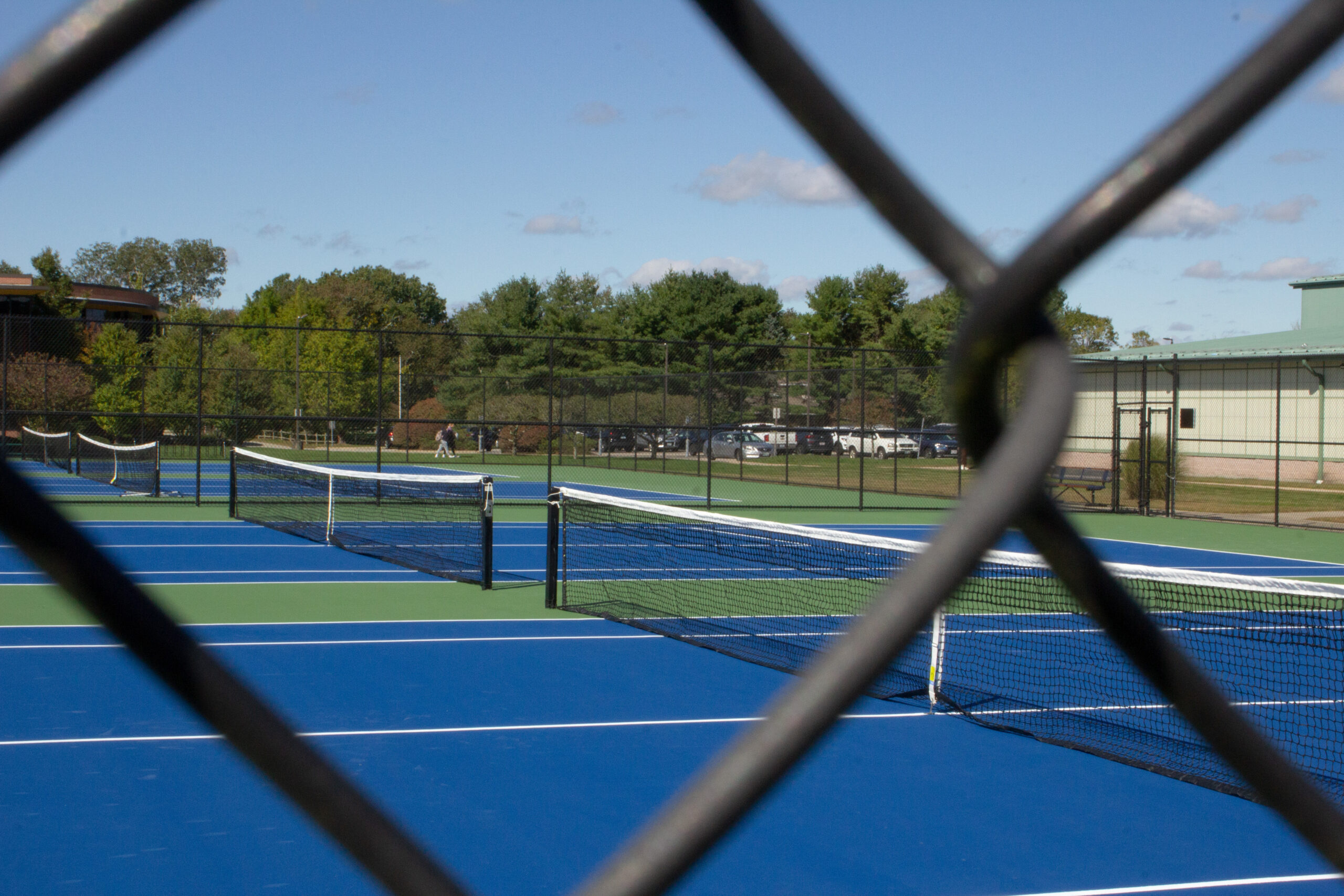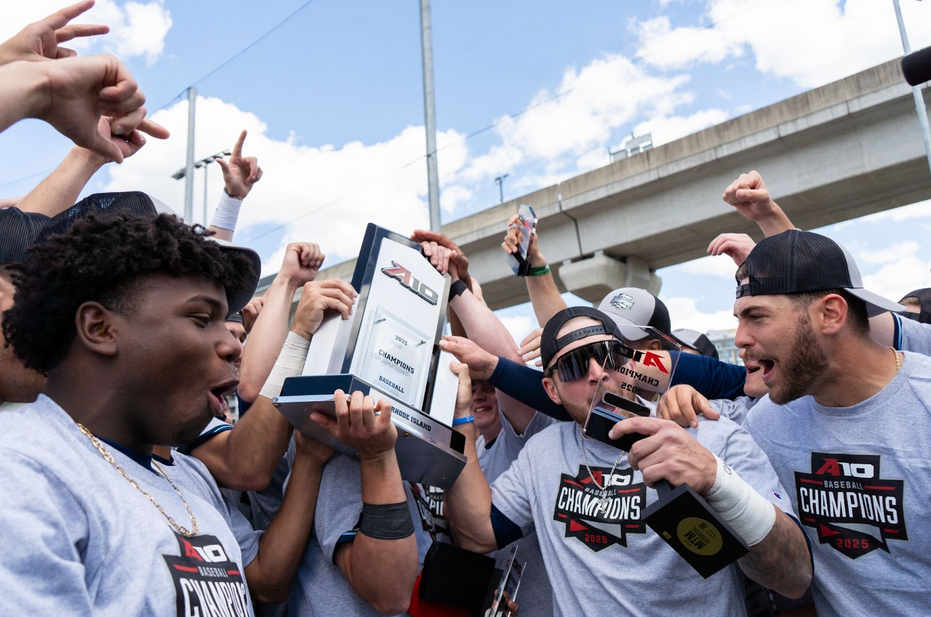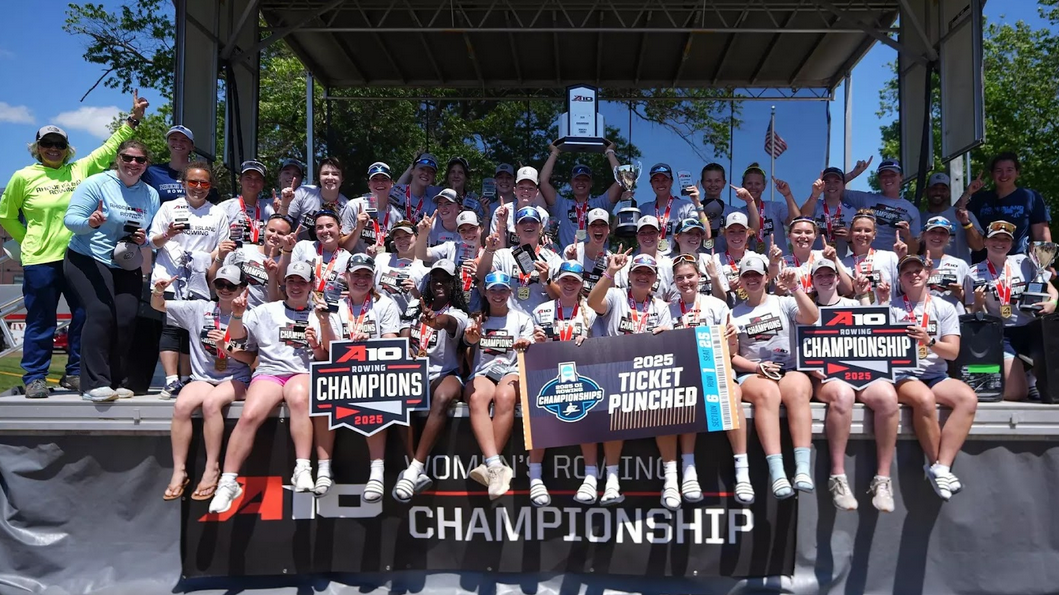The courts were originally supposed to be done before the school year, but bid complications have pushed the deadline to early October. PHOTO CREDIT: Maddie Bataille
Originally set to be complete in mid-July, renovations to tennis courts at the University of Rhode Island are still ongoing due to delays.
The courts near Keaney Gymnasium are undergoing a much-needed resurfacing over the summer, according to Director of Athletics Thorr Bjorn, yet delays in the completion of the project have caused frustration among some of those who rely on them, such as the URI Club Tennis team.
The team was forced to move tryouts, practices and even their first match to an off-campus location temporarily and have had to make several last-minute changes as the courts remain unavailable at the beginning of their season.
With the women’s varsity team set to play their first home match on Oct. 8, Bjorn said the plan is to play that match as scheduled, meaning the courts will be ready by that date at the latest, assuming there are no further delays.
Bjorn cited several reasons for the initial delay of the project, including a dilemma with bids for different construction companies and weather conditions.
“There’s always going to be challenges with rules around purchasing, and which construction company gets a bid or doesn’t, and I think that was some of the delay,” Bjorn said. “Once the project got started, then all of a sudden they were working and weather came in and made some challenges with the second company that was awarded the bid. There was a challenge with the first company.”
While Bjorn was unable to provide the exact details of the challenges he faced with the original company and why they were eventually denied the project, he was able to confirm that the company change delayed the start of the project.
Now nearing the end of September, the majority of the courts still remain without lines and nets.
With no clear answer as to when the courts will be completed, the club tennis team President Lily Frappier expressed frustration at the lack of communication. According to Frappier, after reaching out to several sources in an attempt to find answers, she was just left with more uncertainty.
“[There was] no communication,” she said, “I just feel like no one really knows the status because nobody really knows who to talk to.”
According to Frappier, original plans to host tryouts at the beginning of September, and their first home match the following week all had to be postponed. With no indication of when courts would be available, she said planning such events has brought on a host of new challenges to the club tennis executive board.
According to Vice President Gianna Wadowski, one of the main challenges was transportation, as the team now had to find ways to transport the team via carpools to off-campus courts in order to practice.
“Getting approved drivers, making sure everybody is in carpools and accounted for, all of that stuff would typically be happening in November,” Wadowski said. “But it was really pushed to happen within the first few weeks of school, which is definitely taxing and difficult on the players.”
The complications did not end there though. With no official home courts, the team also has to rely on court availability, which Frappier said is something they do not have complete control over.
“We have court uncertainty because we have to go to a middle school where they also have a high school team playing on those courts,” Frappier said. “We are not priority, since it’s their home courts, so whenever they have practices or matches, we’re not able to practice.”
Wadowski also mentioned that the team did not have the allocated funds to rent out courts in the fall, something that is usually reserved for indoor courts during the winter.
Despite the delays, which Bjorn admitted were not ideal, he expressed optimism in the final result and emphasized the benefits it would bring to both the club and varsity teams, as well as the community looking forward.
“I don’t mean to be dismissive at all because obviously, we would’ve preferred to be on the courts when school started,” Bjorn said. “But things happen, and we have to be able to adjust to it, and I think at the end of the day we’re going to be really excited with the product that is there and know that it’s going to put us in a good position to have access to the courts for the next eight or ten years without having to deal with this again.”
Once complete, the new surface URI tennis courts will offer an improved playing surface for all involved. Until then, tennis players at URI will have to continue adapting to a difficult situation for at least another two weeks.




